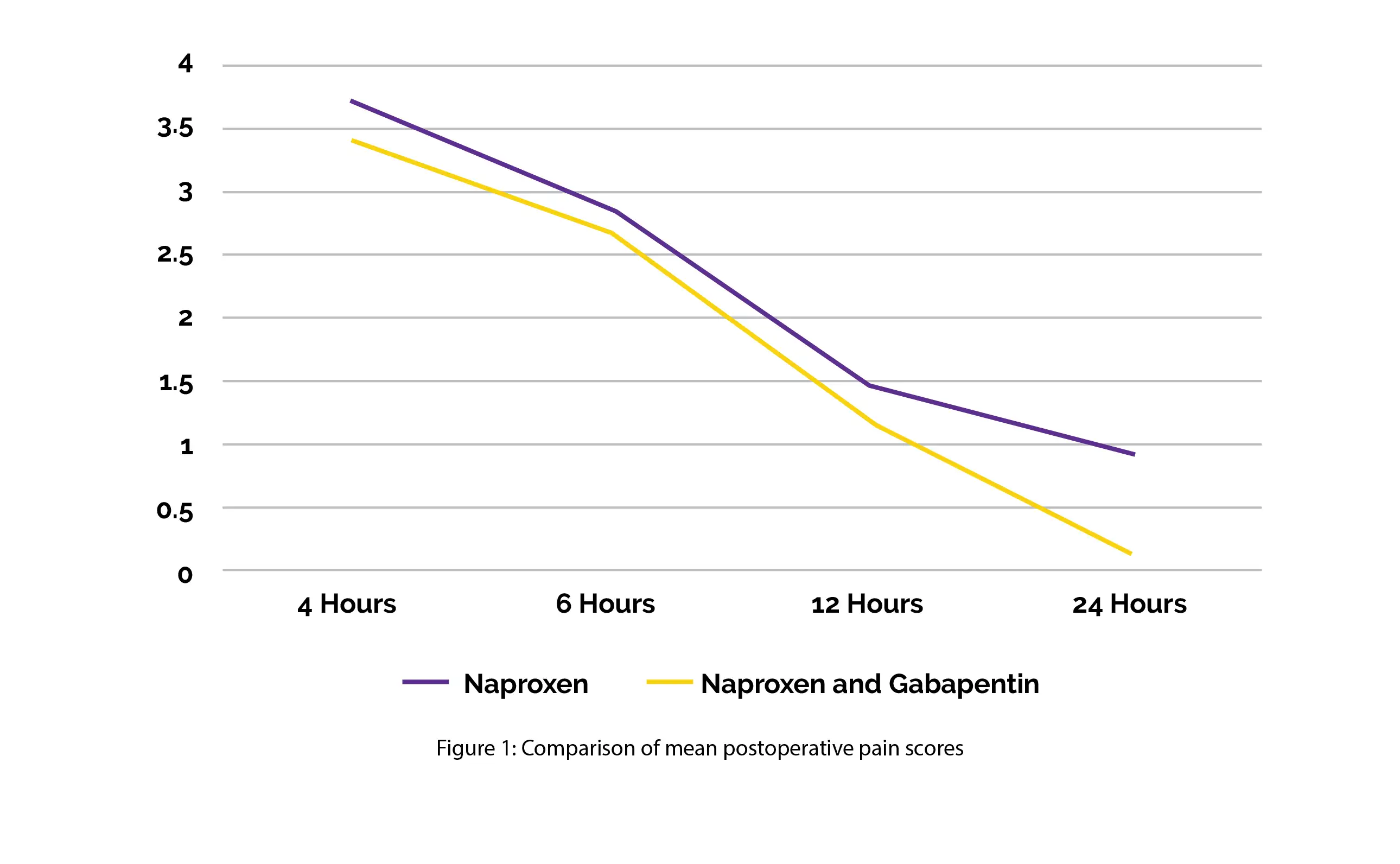Categories
Change Password!
Reset Password!


In patients with an impacted mandibular third molar, Naproxen + Gabapentin is better than Naproxen monotherapy to mitigate post-extraction pain.
A randomized control study published in "The Professional Medical Journal" illustrated that at 12 and 24 hours after dental extraction, combination medication (Naproxen and Gabapentin) was more effective at alleviating pain than monotherapy (Naproxen only). Researchers wanted to compare the effectiveness of Naproxen + Gabapentin vs. Naproxen monotherapy for the management of post-extraction pain from an impacted mandibular third molar.
Under local anesthesia (2% Lignocaine hydrochloride and 1:100,000 Adrenaline), the extraction technique was performed. Few extractions were done using the Closed Extraction approach, whereas, in other volunteers, the traditional surgical procedure was employed, that included triangular muco – periosteal flap on the buccal surface and lingual retraction of soft tissue. This was subsequently followed by bone removal. Wong Baker's Face Pain Rating Scale and Visual Analogue Scale (VAS) were used to measure 24-hour post-operative and pre-operative pain state.
Naproxen and Gabapentin combination treatment significantly reduced pain during the 12- and 24-hour post-extraction periods, as depicted in Figure 1:

After 24 hours, only 3 out of 31 patients who received Naproxen alone had pain scale scores of 0 compared to 26 patients out of 31 who received combination treatment. The hospital pharmacy administered the study medications in a single dose to each patient. With a mean age of 27.89, the demographic data showed that there were 33 women (53%) and 29 men (47%).
When the pain response of the two genders was compared, the males showed somewhat quicker pain alleviation over time than the females. With respect to Naproxen alone, Naproxen + Gabapentin was promising for post-extraction pain management.
The Professional Medical Journal
Comparison of Naproxen and combination therapy (Naproxen and Gabapentin) in post extraction pain relief
Muhammad Muslim Khahro et al.
Comments (0)